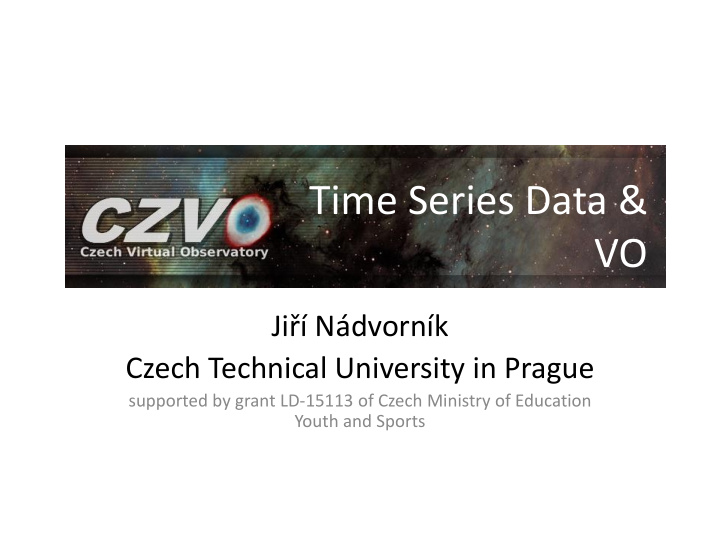



Time Series Data & VO Ji ří Nádvorník Czech Technical University in Prague supported by grant LD-15113 of Czech Ministry of Education Youth and Sports
Managing data products of your pipeline 1. Data ingestion (FITS format - Level 0, 1) 2. Light curve extraction (Proprietary format - Level 2) 3. Interoperable publication (Images, photometry, light curves ) Pipeline producing data
Data ingestion (DaCHS) • XML driven tables, mappings • Extract – reading FITS • Transform – correcting dates, cleaning data • Load – exposure table definition, FITS field mappings DaCHS configuration file example
FITS publication (DaCHS) • XML driven services • SIAP – raw, reduced images (Level 0, 1) • SCS – sources on images (Level 1) DaCHS configuration example
Aladin – SIAP coverage Survey coverage over SMC
Aladin – SIAP image NGC 330 image
Aladin – SCS photometry Cluster of sources for one star
Aladin – SCS photometry Sources of one object
Light curve generation (C++ app) 1. Extract from DaCHS DB (already clean data) 2. Get identifiers in external C++ App 3. Import catalog into DB 4. Import relations into DB
Check the results! Clusters of sources with catalog IDs
Check the results! Catalog IDs for overlapping sources
Check the results! Crossmatch your catalog with others (UCAC4, 2MASS, etc.)
Light curve publication (DaCHS) • XML Driven • CubeDM
SPLAT-VO light curves
What can I use? • Reuse Level 0, 1 data publication (images, sources + photometry) • Reuse Light curve generation (https://gitlab.com/nadvornik- ji/AstroClustering) • Reuse high level data product publication (CubeDM)
Cube DM • Publish any time series data • Implementation and specification progress • Gathering use cases – please supply yours – for inspiration see Enrique Solano's use cases http://wiki.ivoa.net/twiki/bin/view/IVOA/CSPTime Series – Contact us on voevent@ivoa.net
Questions
Recommend
More recommend